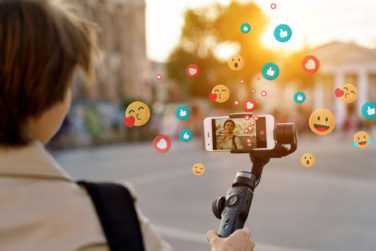The heart has been a metaphor for love and affection since medieval times. The metaphor was first visualized in a romantic text in the 13th century as a man handing his heart to his lover. If you look closely at the illustration, though, it looks like a pinecone. Well, not exactly, but it was more conical than what we would call a heart today. It took a couple of centuries before the cusped, symmetrically curved form came into regular use, its shape being said to have evolved from the characteristics of a fertile woman: Breasts, buttocks, vulva. My question is: How has a symbol so tied to romance come to be used so regularly in healthcare?
Too Much Heart in Healthcare?
There are 51,954 registered trademarks involving a heart. In the U.S. alone there are 17,433.1 Of those U.S. trademarks, there are 3,856 that are health-related and only 129 are cardiovascular.2,3 Okay, I get the cardiovascular trademarks. A bit functional, perhaps not very differentiating or proprietary, but they’re justifiable. It makes sense for healthcare to re-appropriate the symbol from the likes of cupid. Since we recognize the form as a heart, might as well use it to depict the ol’ ticker.
Still, that leaves 3,727 heart-shaped healthcare trademarks in the U.S. not related to the cardiovascular field. What could they possibly be for? Two recent launches could shed some light. CVS Health and Apple’s Health app both launched this year and both have a heart as the central brand motif. I wanted to know why.
With CVS Health, the only official statement I was able to find is an explanation of their name change: It “reflects our broader healthcare commitment and our expertise in driving innovations to shape the future of health.” The heart = broader health? I’m not skeptical of the mission, but the heart remains unexplained. It could be that the heart represents the benefits of the first activation tactic of their new mission—pulling tobacco products off the shelves could lead to better heart health. In which case, a heart logo seems reasonable. But I think CVS Health indeed intends the heart to mean health more broadly. I spoke to a couple of my branding and advertising colleagues who all wondered why I’m so flummoxed. As one said: “Come on: Heart. Health. Duh.” They all seem to think it makes sense.
In some respects, Apple’s Health app is a little more straightforward: It tracks steps, distance and stairs—all very important for a healthy heart. But when I click on the icon for “health data” (which is a heart on a folder) I find body measurements, nutrition, sleep. It’s not really just about my heart. In fact, Apple’s app is more broadly about health, too! So, what’s with the heart?
Don’t get me wrong, I’m open to new possibilities. But when I was growing up, health was symbolized by codes of medicine: The rod of Asclepius, letter “H,” the bold equilateral cross. Other symbols for health could include a stethoscope and maybe pills. So, when did the heart come to stand for health more generally? The answer could lie in understanding healthcare today.
The fact that the industry is changing has been discussed ad nauseam. But what’s interesting is how policy changes and public pressure has inspired new people-oriented innovations in the industry. “Better patient care” and “patient-centricity” are themes we branders and communicators are asked to express time and again. We are shifting from clinical care to emotional care and in the process of finding a new visual and verbal language.
Viewed within this context, the heart has the power to magically transform the elitist, profit-motive machine called “Healthcare” into a people-sided, do-good “agent for health.” Think about the classic heart idioms: “Speaking from the heart” means open and honest communication; having your “heart in the right place” means kind and good intentions. And, when we say someone has “a big heart,” we don’t always mean congestive heart failure. These idioms reveal the latent goodness in the word “heart.”
A heart in a logo could connect these concepts to a company, product or service conveying something good in business, good for society, good for you. For an industry trying to change its image, associating itself with the heart may do the trick. That it makes sense to many, despite the historical incongruities, means it’s doing the trick. It wouldn’t surprise me if we were to see this consumer health trend enter into the more regulated healthcare world. We certainly need a respite from ubiquitous stick figure man with arms in the air, which I call the “Y-man.”
But before jumping onto this “heart” bandwagon, we need to be aware that using it to distinguish your pharma company, product or service brand may pose challenges. In addition to the regulatory considerations, if you Google “basic shapes,” you’ll find a host of charts. The heart is almost always in them. That means, while it can be universally appreciated, it’s also physically common. This can be a problem when trying to trademark a heart-based logo. Customizing the form in some way may help create a more ownable, proprietary shape, but it wouldn’t pull you apart from the healthcare pack.
Despite being conceptually appropriate in healthcare, it doesn’t on its own telegraph your point of difference within healthcare; it just connects you to it. So, while it’s not entirely ubiquitous today, marketers and agencies need to be careful not to let the bottom of a symposium abstract or the sponsorship marquee of a conference eventually look like the inside back cover of a 12-year-old girl’s notebook—with hearts all over it.
Healthcare is a vast industry. Each segment and brand should help its audiences understand its own unique nuances. Of course our industry creates health, provides care and improves outcomes, but the brands we work on typically do more. They do things (or should) that are notable and distinct.
It’s our job to help audiences appreciate those differences. While I have a lot of heart for the heart, we mustn’t rely on it to speak for us all.
References:
1. All available databases where design codes/design phrases are searchable.
2. Health related (classes 5 or 10 or 42 or 44): 12,171 “global”/3,856 U.S.
3. Where goods/services reference “cardiovascular…”: 249 “global”/129 U.S.






